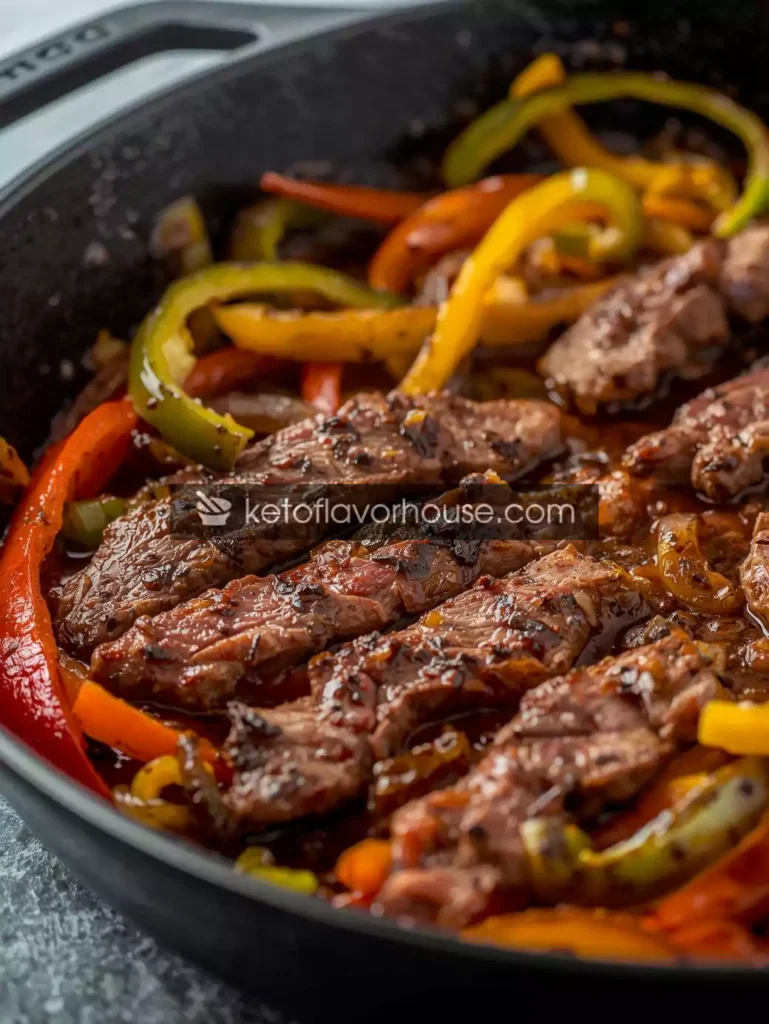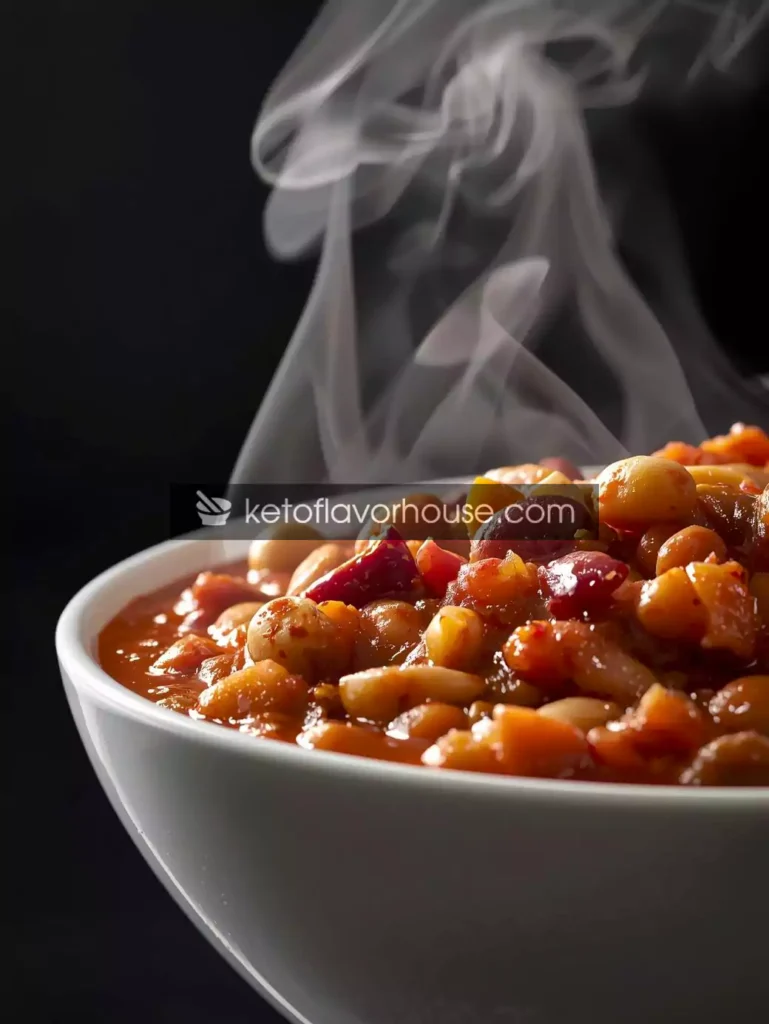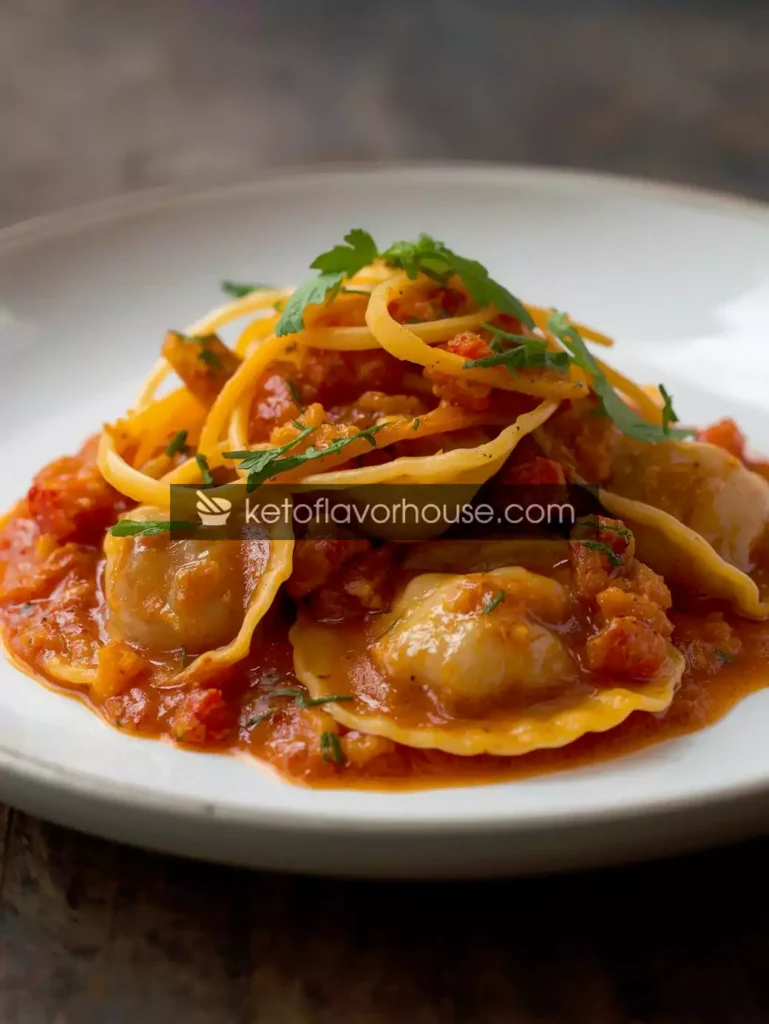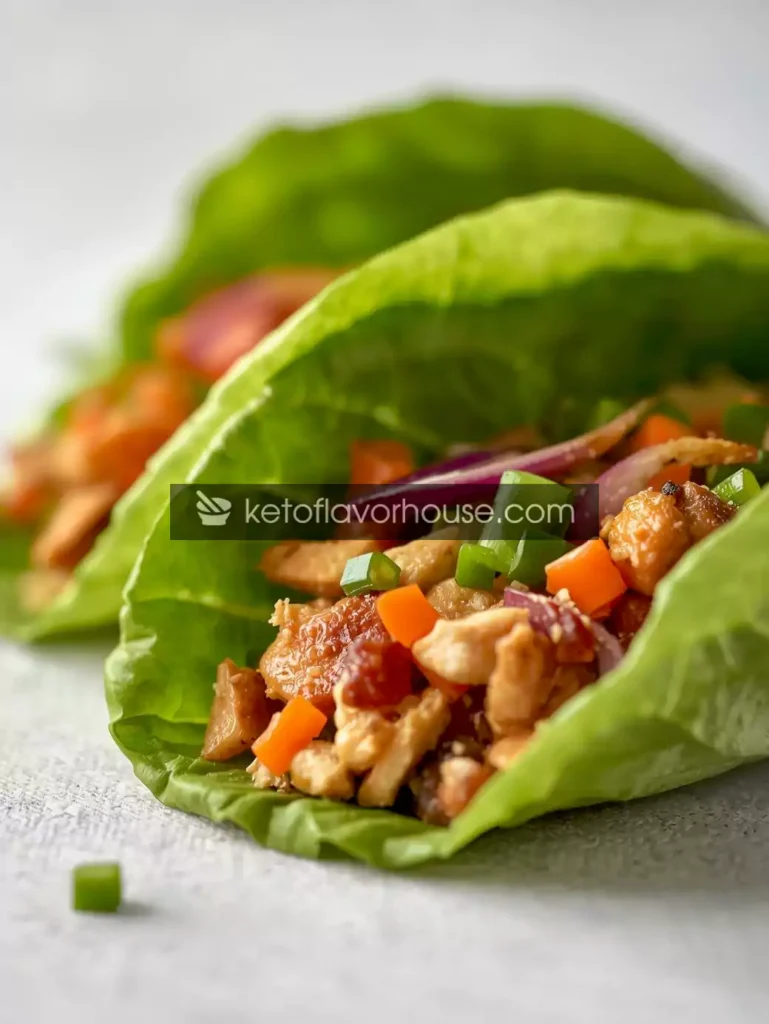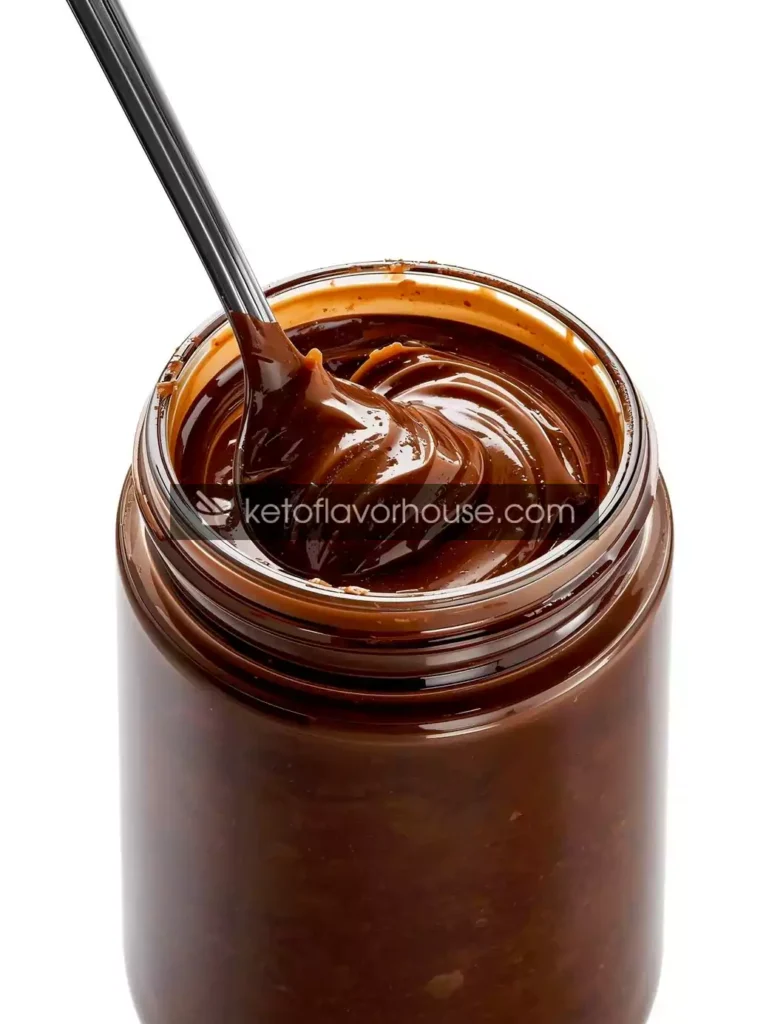This post may contains Amazon affiliate and other affiliate links. If you make a purchase through these links, I may earn a small commission at no extra cost to you. Your support helps me continue to provide quality content. I only recommend products I personally trust and believe will add value to your experience. For more details, please visit my Privacy Policy.
There are certain smells that yank you straight back to better days — in my case, it’s the sizzle of steak hitting a screaming-hot pan and the sweet perfume of bell peppers caramelizing beside it. That memory is what inspired this Bariatric Steak Fajita Skillet: a low-carb, high-protein one-pan dinner that gives you all the smoky, tangy, satisfying fajita flavor without the heavy tortillas or oversized portions. If you’re following a post-op plan or simply want a mindful, protein-first family meal, this recipe is crafted to deliver comfort and nutrition in every bite.
Why this recipe is great for bariatric eaters (and who will love it)
Bariatric eaters need meals that prioritize protein, minimize needless carbs, and sit gently in the stomach — without feeling like punishment. This skillet does exactly that. The lean steak supplies dense, satiating protein; peppers and onions add fiber and volume without excess calories; and a bright squeeze of lime finishes the dish so it tastes lively, not bland. Who will love it? Anyone craving a hearty, savory dinner that supports healing, maintains muscle, and fits into a low-carb or keto approach — from fresh post-op patients on pureed-to-soft progressions (with modifications) to long-term maintainers who want flavor without the carbs.
What makes this special is the balance: bold fajita seasoning, quick cooking, and portion control baked into a one-skillet format. It’s both practical and joyfully tasty.
Why You’ll Love This Recipe
- 🥩 Protein-first — builds muscle and supports recovery
- 🌶️ Bold, smoky flavor — satisfies cravings without excess calories
- ⏱️ One-pan weeknight dinner — less cleanup, more flavor
- 🥗 Low-carb & nutrient-dense — peppers and onions add fiber and micronutrients
- 👨👩👧 Family friendly — serve bowls for those avoiding tortillas, or low-carb wraps for others
My Personal Experience
I’ll never forget the first time I tried to re-create my favorite restaurant fajitas after surgery. I missed the ritual — the sizzling platter, the steam, the aroma of lime and cumin. The first attempt in my small kitchen was… messy. I overcooked the steak into shoe leather and the peppers went limp. But that misstep taught me two things: thin slices and timing matter, and you don’t need a tortilla to feel satisfied.
On the second try, I let the steak rest at room temperature, seasoned simply, and worked the pan in two short bursts — steak first, then veggies. When I tossed everything back together with a splash of fresh lime, it tasted like the indulgent fajitas I loved — only lighter, cleaner, and easier on my body. That evening, I realized the power of small, flavorful dishes that still respect post-op rules. Since then, this skillet has become a rotate-weekly staple: quick, bright, and reliably satisfying.
Required Equipment
Skillet (preferably heavy-bottomed, 10–12 inch)
A skillet gives even heat and the perfect sear. Cast iron is amazing for heat retention and that classic sizzle; nonstick is kinder for easy cleanup. The wide surface area lets steak and veggies breathe so they caramelize instead of steaming.
Sharp Chef’s Knife
Thin, even slices are critical for tender steak and quick-cooking peppers. A sharp knife reduces tearing and keeps cooking times consistent.
Cutting Board
Sturdy and roomy — use separate boards for meat and veg to keep prep safe and organized.
Tongs
Tongs are the gentlest tool for flipping steak strips and tossing vegetables without shredding them.
Mixing Bowl
For tossing the steak with the fajita seasoning and oil — it helps everything get evenly coated.
Meat Thermometer (optional)
If you want precision, a thermometer takes the guesswork out of doneness so you don’t overcook lean steak.
Ingredients & Substitutions
(Serves 4 — realistic bariatric portions)
- 8 oz (227 g) flank steak, thinly sliced against the grain
Why it matters: Lean, richly flavored source of complete protein — supports healing and satiety.
Substitute: Thinly sliced chicken breast (similar protein, lower fat) or shrimp (faster cook time). - 1 medium red bell pepper (≈150 g), thinly sliced
Why it matters: Adds vitamin C, color, and natural sweetness to balance the steak.
Substitute: Orange or yellow pepper for milder sweetness; zucchini ribbons if you want fewer carbs. - 1 medium green bell pepper (≈150 g), thinly sliced
Why it matters: Classic fajita crunch and freshness.
Substitute: Green beans or asparagus for seasonal variety. - ½ medium yellow onion (≈55 g), thinly sliced
Why it matters: Sweetness when caramelized — helps make small portions feel substantial.
Substitute: Shallot for a more subtle, sweet note. - 1 tbsp olive oil (≈13.5 g)
Why it matters: Helps sear while providing healthy monounsaturated fat.
Substitute: Avocado oil, or use a light mist of cooking spray to lower fat. - 1 tsp smoked paprika
Why it matters: Brings smoky depth without actual smoke — key fajita flavor.
Substitute: Regular paprika + tiny pinch of cayenne. - ½ tsp garlic powder & ½ tsp onion powder
Why they matter: Layer savory umami without extra bulk or moisture.
Substitute: Fresh garlic (1 clove minced) and 1 tbsp finely diced onion — adds texture. - ½ tsp chili powder (adjust to taste)
Why it matters: Adds gentle warmth; easy to scale for sensitive mouths.
Substitute: Ground cumin for earthier notes. - Salt & black pepper to taste
Why it matters: Balances and elevates the natural flavors. - 1 tbsp lime juice (fresh)
Why it matters: Bright acidity cuts through richness and helps digestion.
Substitute: 1 tsp apple cider vinegar if you prefer. - Optional: 2 tbsp chopped fresh cilantro for garnish; 2 tbsp plain nonfat Greek yogurt to serve (adds protein and creaminess).
Bariatric note for each ingredient: Everything was chosen to boost protein or add low-volume micronutrients. Spices replace heavy sauces for flavor, while lime and herbs add vibrancy without calories.
How to Make Bariatric Steak Fajita Skillet
Step 1 — Prep like a pro
Slice your steak thin (against the grain) and toss it in a mixing bowl with half the oil, smoked paprika, garlic powder, onion powder, chili powder, salt and pepper. Let it rest 8–10 minutes at room temperature. While it rests, slice peppers and onions into even strips.
Mini-tip: Slicing against the grain shortens muscle strands and makes each bite tender — essential when you’re working with lean cuts.
Step 2 — Sear the steak in two quick batches
Heat your skillet until very hot, then add half the oil. In a single layer, sear the steak for 1.5–2 minutes per side — you want a brown crust with plenty of juices. Work in two batches to avoid overcrowding. Remove steak to a plate and tent loosely.
Mini-tip: Don’t salt the steak until after searing if you’re using fine salt; salting too early draws moisture. A quick sprinkle afterward helps the crust.
Step 3 — Sauté vegetables for contrast
Lower heat to medium. Add remaining oil, then the onions and peppers. Cook 4–6 minutes until peppers are tender-crisp and onions are sweet and translucent. Season lightly with salt and a pinch more smoked paprika while cooking.
Mini-tip: Keep the veggies moving — you want color and a slight char without turning them into soft mush.
Step 4 — Bring it together
Return the steak to the pan, toss with the vegetables, and heat through 1–2 minutes. Finish with a generous squeeze of fresh lime juice and a scattering of chopped cilantro.
Encouragement: Don’t worry if the pieces aren’t identical — the flavors will meld, and the mix-and-match texture is part of the charm.
Step 5 — Plate with portion control in mind
Serve warm in shallow bowls. For bariatric portioning, pair each serving with a small side of leafy greens or cauliflower rice rather than a full tortilla.
Timing notes: Total hands-on time is under 20 minutes; active cook time around 12–15 minutes. The critical moments are the hot sear and brief veggie sauté.
Oven, Air Fryer & Stovetop Variants
- Stovetop (recommended): As written — fastest and gives best sear.
- Air Fryer: For the steak only: toss seasoned steak strips in a very light oil spray and air fry at 400°F for 6–8 minutes, shaking halfway. Sauté peppers on stovetop separately.
- Oven (sheet-pan): Spread steak and veg on a rimmed sheet, roast at 425°F for 10–12 minutes turning once — you’ll get roast-char rather than pan sear.
Point differences: Air fryer/oven versions have slightly less Maillard crust (browned flavor) but are great for batch cooking.
Common Mistakes to Avoid
- Overcrowding the skillet: leads to steaming, not searing. Fix: cook in batches.
- Cutting meat with the grain: makes steak tough. Fix: slice against the grain.
- Overcooking lean steak: it dries quickly. Fix: pull at medium-rare/medium and rest.
- Soggy peppers: crowding or high moisture causes limp veg. Fix: high heat, quick cook.
Pro Tips for Best Results
- Bring steak to room temp for even cooking.
- Dry the steak with paper towel before seasoning for a better sear.
- Finish with acid (lime) just before serving — it brightens everything.
- Use flavored salts or smoked paprika rather than heavy sauces; they add complexity without extra calories.
- Double the veggies if you want more volume for lower calories per bite.
Bariatric Nutrition & Strategy
This recipe was crafted with three principles in mind: protein first, controlled volume, and nutrient density. Steak supplies high-biological-value protein to support muscle maintenance and healing — especially important in the months after bariatric surgery. The peppers and onion deliver fiber and essential micronutrients (vitamin C, vitamin A, folate), which aid overall recovery and gut health. By avoiding tortillas and heavy creams, you keep carbs and caloric density low, making portion control natural and satisfying.
How to fit it into a daily plan: Enjoy a serving after a lean protein morning (e.g., egg or yogurt) and count this as your dinner protein. If you track macros, pair with a small cup of cauliflower rice or a side salad to round out the meal.
Variations You Can Try
- Chicken fajita skillet: swap steak for thin chicken; cook slightly longer.
- Citrus-Herb: add orange zest and fresh oregano for a brighter note.
- Smoky Chipotle: use chipotle powder and a dash of adobo for deep heat (watch for sodium).
- Veg-heavy: add mushrooms, zucchini, or a handful of spinach near the end for extra fiber and volume.
Each swap nudges macros slightly — e.g., chicken lowers fat; extra veg reduces calories per bite.
Tips for This Recipe (Serving & Swaps)
- Serve in bowls with lettuce wraps or thin low-carb tortillas for family members who want wraps.
- Use a dollop of plain Greek yogurt instead of sour cream to raise protein and reduce fat.
- Add avocado slices sparingly for heart-healthy fats — one or two slices per serving is enough.
Optional Additions
- A sprinkle of reduced-fat cheddar — adds comfort, but count the extra calories.
- Toasted pepitas — for crunch and omega-3s (use a small amount).
- A few sliced olives — for Mediterranean flair; watch sodium.
Serving Ideas
- Weeknight dinner: bowl of fajita strips + side salad.
- Meal prep: cook steak and peppers separately; reheat and combine for 3-4 days.
- Entertaining: serve with small low-carb wraps or lettuce leaves and let guests assemble.
Storage Recommendations
- Fridge: Store cooled leftovers in an airtight container up to 3 days.
- Freezer: Not recommended for peppers (texture changes), but steak alone can be frozen up to 1 month.
- Reheating: Reheat gently in a skillet with a splash of water or broth to avoid drying the meat.
Frequently Asked Questions (FAQ)
Q: Can I freeze the whole skillet?
A: Best to freeze steak only. Peppers become watery and lose texture when frozen then thawed.
Q: Is this suitable for early post-op bariatric patients?
A: In early pureed/soft stages, you’ll need to modify: blend the cooked components into a softer, smooth texture and focus on small portions. Always follow your surgeon/dietitian guidance.
Q: Can I swap to chicken or shrimp?
A: Yes — chicken breast or shrimp both work well. Adjust cook times (shrimp cooks very fast).
Q: Are fajita seasonings high in sodium?
A: Some store-bought mixes are — making your own (paprika, garlic powder, onion powder, chili powder, salt) lets you control sodium.
Q: Can I make this in advance for meal prep?
A: Absolutely. Cook the components and store separately; combine and reheat before serving for best texture.
Q: How do I keep the steak tender?
A: Slice thin against the grain and avoid overcooking. Rest briefly after searing.
Q: Is this keto-friendly?
A: Yes — with net carbs typically under 6 g per serving when served without tortillas.
Nutritional Breakdown (Per Serving — estimated; recipe yields 4 servings)
(Calculated from recipe ingredients below. Values are estimates and should be recalculated with specific brands if exactness is required.)
- Calories: 168 kcal
- Protein: 15.7 g
- Fat: 8.2 g
- Total Carbs: 6.1 g
- Fiber: 1.8 g
- Net Carbs: 4.3 g
- Sugar: 3.8 g
- Sodium: 35 mg
Recipe Snapshot
- Prep Time: 10 minutes
- Cook Time: 15 minutes
- Total Time: 25 minutes
- Course: Dinner / Main
- Cuisine: Tex-Mex / Bariatric-Friendly
- Servings: 4
- Calories (per serving): ~168 kcal
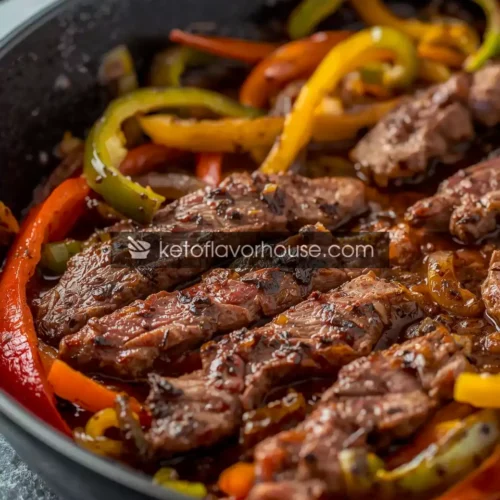
Bariatric Steak Fajita Skillet (Low-Carb & High-Protein Dinner) Recipe
Ingredients
- 8 oz flank steak thinly sliced (227 g)
- 1 medium red bell pepper sliced (≈150 g)
- 1 medium green bell pepper sliced (≈150 g)
- ½ medium yellow onion sliced (≈55 g)
- 1 tbsp olive oil ≈13.5 g
- 1 tsp smoked paprika
- ½ tsp garlic powder
- ½ tsp onion powder
- ½ tsp chili powder optional
- Salt & pepper to taste
- 1 tbsp fresh lime juice
- Optional: 2 tbsp chopped cilantro 2 tbsp plain Greek yogurt
Instructions
- Toss steak with half the oil and seasonings; rest 8–10 min.
- Heat skillet on high; sear steak 1.5–2 min per side in batches. Remove.
- Add remaining oil; sauté onions and peppers 4–6 min until tender-crisp.
- Return steak to pan, toss with lime juice, heat through 1–2 min.
- Serve in bowls with cilantro and a spoon of Greek yogurt if desired.

